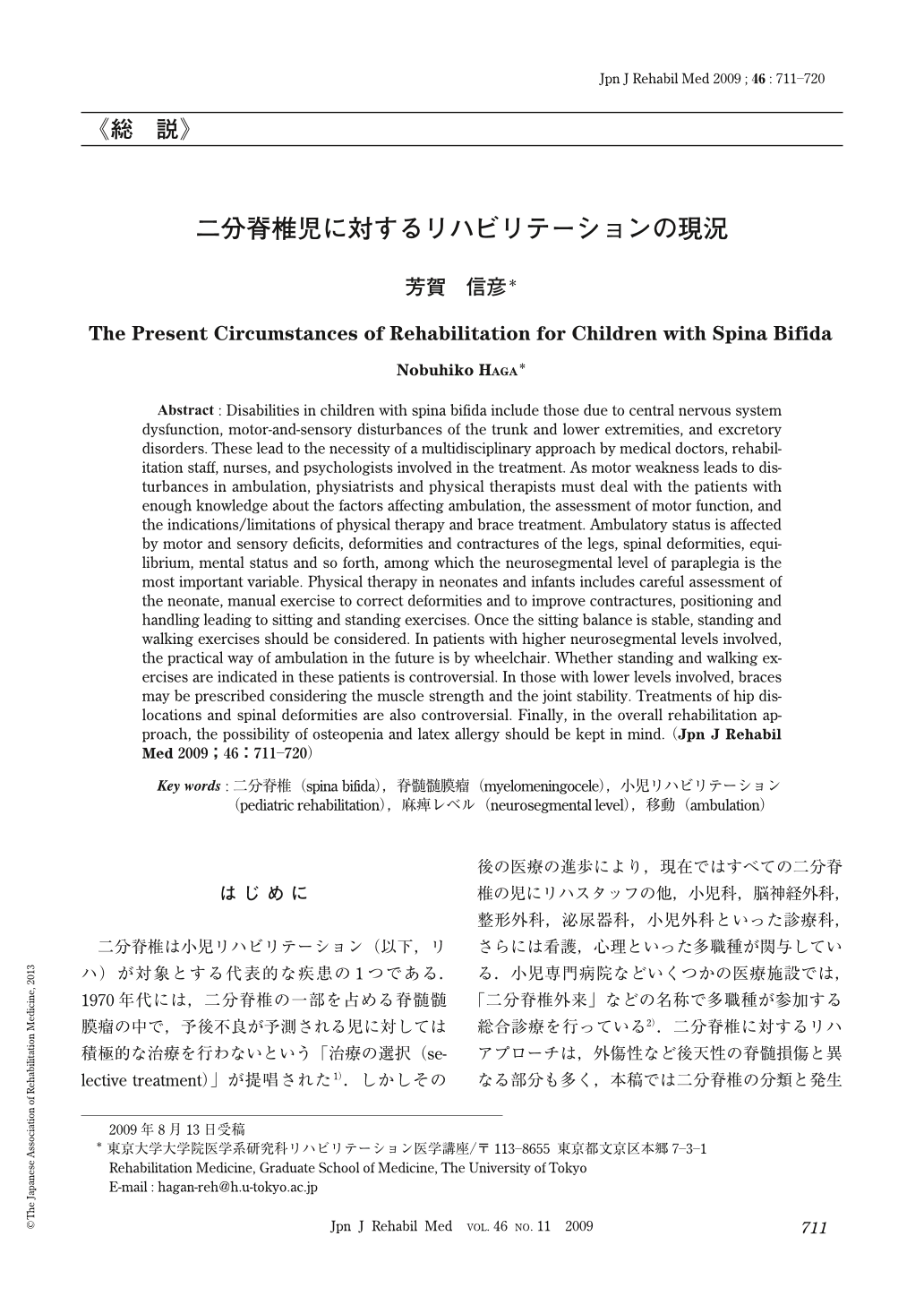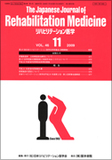Japanese
English
- 販売していません
- Abstract 文献概要
- 1ページ目 Look Inside
- 参考文献 Reference
はじめに
二分脊椎は小児リハビリテーション(以下,リハ)が対象とする代表的な疾患の1つである.1970年代には,二分脊椎の一部を占める脊髄髄膜瘤の中で,予後不良が予測される児に対しては積極的な治療を行わないという「治療の選択(selective treatment)」が提唱された1).しかしその後の医療の進歩により,現在ではすべての二分脊椎の児にリハスタッフの他,小児科,脳神経外科,整形外科,泌尿器科,小児外科といった診療科,さらには看護,心理といった多職種が関与している.小児専門病院などいくつかの医療施設では,「二分脊椎外来」などの名称で多職種が参加する総合診療を行っている2).二分脊椎に対するリハアプローチは,外傷性など後天性の脊髄損傷と異なる部分も多く,本稿では二分脊椎の分類と発生頻度,障害像について概説した後,主に運動麻痺と立位・歩行に向けたリハについて記述する.
Abstract : Disabilities in children with spina bifida include those due to central nervous system dysfunction, motor-and-sensory disturbances of the trunk and lower extremities, and excretory disorders. These lead to the necessity of a multidisciplinary approach by medical doctors, rehabilitation staff, nurses, and psychologists involved in the treatment. As motor weakness leads to disturbances in ambulation, physiatrists and physical therapists must deal with the patients with enough knowledge about the factors affecting ambulation, the assessment of motor function, and the indications/limitations of physical therapy and brace treatment. Ambulatory status is affected by motor and sensory deficits, deformities and contractures of the legs, spinal deformities, equilibrium, mental status and so forth, among which the neurosegmental level of paraplegia is the most important variable. Physical therapy in neonates and infants includes careful assessment of the neonate, manual exercise to correct deformities and to improve contractures, positioning and handling leading to sitting and standing exercises. Once the sitting balance is stable, standing and walking exercises should be considered. In patients with higher neurosegmental levels involved, the practical way of ambulation in the future is by wheelchair. Whether standing and walking exercises are indicated in these patients is controversial. In those with lower levels involved, braces may be prescribed considering the muscle strength and the joint stability. Treatments of hip dislocations and spinal deformities are also controversial. Finally, in the overall rehabilitation approach, the possibility of osteopenia and latex allergy should be kept in mind.

Copyright © 2009, The Japanese Association of Rehabilitation Medicine. All rights reserved.


